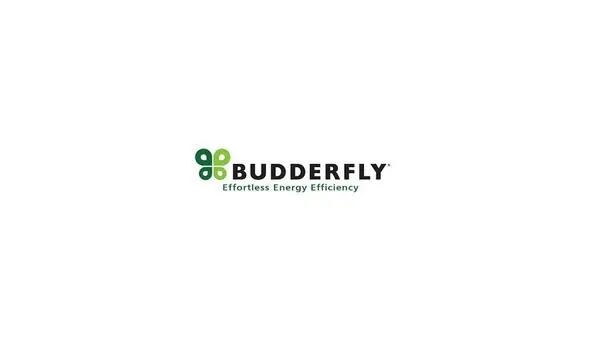
Budderfly Expands Virtual Power Plant Platform Across Major U.S. Markets, Empowering Commercial Mid-Market Grid Flexibility
Budderfly, a leading sustainability partner for commercial businesses, has taken a bold leap forward in the realm of clean energy innovation by announcing a significant expansion of its Virtual Power Plant (VPP) platform. This expansion, which became operational on June 1, 2025, marks a pivotal milestone as Budderfly activates real-time demand response across four of the United States’ most critical energy markets: the California Independent System Operator (CAISO), Independent System Operator New England (ISO-NE), the Pennsylvania-New Jersey-Maryland (PJM) Interconnection, and the Southwest Power Pool (SPP).
This strategic development positions Budderfly at the forefront of a rapidly evolving energy landscape. By integrating its behind-the-meter resources with real-time grid operations, Budderfly is not only enhancing energy resilience but also transforming thousands of small and mid-sized commercial sites into smart, responsive assets that actively support and stabilize the power grid.
Transitioning to Real-Time Grid Participation
The activation of these sites across multiple Independent System Operators (ISOs) signals Budderfly’s transition from a passive energy efficiency provider to an active grid participant. Through the orchestration of distributed energy resources (DERs) and intelligent load controls, Budderfly’s VPP is now capable of dynamically responding to grid conditions in real time.
Initial VPP deployments have been centered on thermostatic control of HVAC systems—an area with significant flexible load potential. These capabilities enable Budderfly to adjust heating and cooling loads at commercial sites during peak demand periods or grid emergencies. The company plans to expand these functionalities to include additional flexible assets such as refrigeration systems, on-site battery storage, intelligent lighting, and rooftop solar installations. This evolution will create a layered, integrated network of flexible energy resources that function collectively as a virtual power plant.
“Our VPP capabilities are transforming hundreds of commercial sites into intelligent, grid-interactive buildings,” said Al Subbloie, CEO of Budderfly. “We’re demonstrating that real grid flexibility doesn’t only come from industrial campuses or sprawling big-box retailers—it can come from community businesses, from local gyms, restaurants, healthcare providers, and retail shops. We’re working to ensure that participation in these advanced energy systems is simple, seamless, and delivers clear value to our customers. That’s the standard we’re setting.”
A Differentiated Model: Ownership and Automation
What distinguishes Budderfly’s approach in the crowded VPP landscape is its fully integrated and ownership-based model. Unlike traditional VPP aggregators who typically rely on customer-owned assets and require end-users to manually respond to grid signals or enroll in complex programs, Budderfly owns and operates the DERs it deploys. This model not only streamlines participation for commercial clients—who are often burdened by limited time and technical capacity—but also enhances the reliability and responsiveness of the virtual power plant.
With partnerships that include utility Evergy and technology platform Leap, Budderfly’s multi-ISO VPP went live with full automation, enabling fast-acting demand response and grid services without manual intervention. From grid operators’ perspectives, this translates into a dependable, dispatchable resource that can help stabilize frequency, reduce peak demand, and support renewable integration.
Thomas Flynn, Budderfly’s Chief Administrative Officer and General Counsel, emphasized the importance of enabling small and mid-sized businesses (SMBs) to participate in the energy transition. “Our model gives the grid what it needs, when it needs it, without disrupting the core operations of the businesses we serve,” said Flynn. “This isn’t just about energy savings—it’s about empowering a critical segment of the economy to take an active role in the future of our energy systems. The SMB segment will be a cornerstone of tomorrow’s responsive, decentralized grid.”
Unlocking Value Across the Demand Side
Budderfly currently manages energy services for more than 7,500 customer locations, a portfolio that spans numerous sectors including food service, fitness, healthcare, education, and retail. By activating these sites for participation in real-time grid markets, Budderfly is unlocking a new layer of value from assets that have traditionally been viewed only as passive energy consumers.
Instead of relying on expensive and environmentally intensive peaker plants to provide grid reliability during periods of high demand, Budderfly’s VPP aggregates flexible demand from thousands of smaller loads. This demand-side capacity not only reduces strain on the grid but also provides a cleaner, faster-acting, and more distributed alternative to conventional power generation. Importantly, the value of this flexibility is shared with customers in the form of lower energy costs, performance-based incentives, and improved operational resilience.
Budderfly’s VPP is uniquely positioned to scale in a way that mirrors and complements supply-side infrastructure. As more commercial facilities integrate smart controls and DERs, the collective load flexibility available to grid operators will grow exponentially. This distributed architecture is especially important as utilities seek to balance an increasingly intermittent mix of solar and wind generation.
Preparing for Expansion into Additional Markets
Building on its successful entry into CAISO, ISO-NE, PJM, and SPP, Budderfly is preparing for further VPP expansion in the second half of 2025. Plans are underway to launch grid services in Texas (ERCOT) and New York (NYISO), two of the most dynamic and opportunity-rich electricity markets in the country. These regions face growing challenges related to grid stability, decarbonization, and the integration of distributed energy resources—all areas where Budderfly’s platform and approach can add substantial value.
The company’s geographic expansion strategy aligns with its mission to scale intelligent energy solutions across all corners of the commercial market. By integrating more assets into its VPP platform, Budderfly will increase the volume of flexible load it can offer to grid operators, enhancing both regional reliability and the financial attractiveness of distributed participation.
A $55 Billion Opportunity
Budderfly’s focus on small and mid-sized commercial businesses is not only impactful from a grid perspective—it’s also economically significant. According to industry estimates, SMBs account for approximately $55 billion in annual electricity spending in the U.S. alone. Historically, this segment has been underserved by energy solution providers due to the perceived complexity and cost of delivering value at scale. Budderfly is rewriting that narrative by combining energy efficiency, real-time optimization, and software-driven DER coordination in a single, turnkey offering.
This unique combination allows Budderfly to deliver multiple layers of value simultaneously: reduced energy consumption, increased operational efficiency, participation in grid services, and measurable reductions in greenhouse gas emissions. It’s a win-win-win approach that benefits businesses, utilities, and the environment alike.
Powering a Smarter, Cleaner Future
Budderfly’s VPP initiative represents a vital shift in how energy systems are designed and operated. As the U.S. grid becomes more decentralized, digitized, and decarbonized, platforms like Budderfly’s will play an essential role in ensuring stability and cost-effectiveness. By focusing on automation, ownership, and ease of use, Budderfly is eliminating barriers that have historically excluded smaller commercial players from advanced grid services.
In doing so, Budderfly is transforming everyday businesses into energy innovators—proving that sustainability and profitability can go hand in hand. Whether it’s a local restaurant, a fitness center, or a school, these sites are now part of a larger movement toward a smarter, cleaner, and more resilient energy future.
As Budderfly continues to expand its reach, its VPP model offers a blueprint for how commercial mid-market sectors can be empowered to play a leading role in shaping the future of energy in America.










